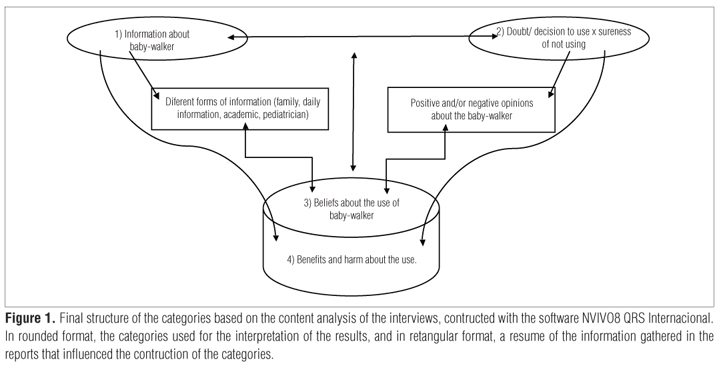OBJECTIVES: To understand the opinion of the parents about the baby walker and compare the age of gait acquisition between infants that used a walker and those that did not. METHODS: In this quali-quantitative study, an interview involving a semi-structured questionnaire was carried out with 26 parents, 14 of whose infants used the equipment (BWG) and 12 of whose infants did not (NBWG) prior to gait acquisition. After extensive content analysis, categories for interpreting the results emerged. For data triangulation, the age of gait acquisition was documented by weekly telephone contact. Student's t-test was used for comparison between groups with a significance level of α=0.05. RESULTS: The following categories were identified in the parents' reports: a) information about the baby walker; b) doubt/decision to use it vs. certainty about not using it; c) beliefs about the use of a baby-walker; and d) benefits and harm from use. The age of independent gait acquisition did not differ between groups (p=0.837): BWG initiated gait at 376.17 (SD=32.62) days and NBWG did so at 378.75 (SD=27.99) days. CONCLUSIONS: The beliefs and feelings that permeate the decision to use a baby walker illustrate the different rationales adopted by parents about the role of this equipment in the child's development of gait and autonomy. The use of a baby walker did not influence the age of gait acquisition. The results broaden the understanding of choices that influence child-rearing practices prior to gait acquisition.
baby walkers; infants; beliefs


